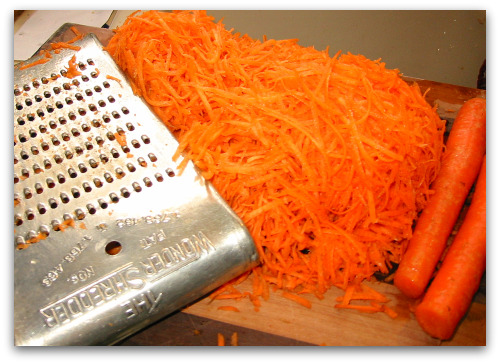
Stollen is German for Christmas Bread, but in our household we eat this for breakfast any time of the year. Full of candied/dried fruit (reminiscent of English-style "Fruitcake"), stollen is typically eaten only during the winter holiday season -- but German housewives start making it in fall to let it sit and "mature". Nowadays, many will simply buy commercially-made stollen, often with marzipan filling-- yummy!
When I researched "Stollen" on Wikipedia, I found the following tidbit of history -- sure am glad we don't have to petition the pope to use butter!
The old name Striezel came from Strüzel or Stroczel, "awaken" (Old Prussian: troskeilis), which came to mean "early-baked loaf of bread". The shape of the cake was originally meant to represent the baby Jesus wrapped in swaddling clothes.The early Stollen was a different pastry, the ingredients were very different - flour, oats and water.
As a Christmas pastry, Stollen was baked for the first time at the Saxon Royal Court in 1427, and was made with flour, yeast, oil and water. The Advent season was a time of fasting, and bakers were not allowed to use butter, only oil, and the cake was tasteless and hard. In the 15th century, in medieval Saxony (a region in the eastern part of Germany, north of Bavaria and south of Brandenburg), the Prince Elector Ernst (1441 - 1486) and his brother Duke Albrecht (1443 –1500) decided to remedy this by writing to the Pope in Rome. The Saxon bakers needed to use butter, as oil in Saxony was expensive and hard to come by, and had to be made from turnips, which was unhealthy.
Pope Nicholas V (1397 – 1455), in 1450 denied the first appeal. Five popes died until finally, Pope Innocent VIII, (1432 – 1492) in 1490 sent a letter to the Prince, known as the "Butter-Letter" which granted the use of butter (without having to pay a fine) - but only for the Prince-Elector and his family and household.
Others were also permitted to use butter, but with the condition of having to pay annually 1/20th of a gold Gulden to support the building of the Freiberg Cathedral. The ban on butter was removed when Saxony became Protestant.
Over the centuries, the cake changed from being a simple, fairly tasteless "bread" to a sweeter cake with richer ingredients, such as marzipan, although the traditional Stollen is not as sweet, light and airy as the copies made around the world.
My version is much lighter and less rich than what you get during the holidays in Germany, so perhaps it is closer to the older versions? My version for everyday has almond flavoring, reminiscent of the marzipan flavor without the calories & expense! And I use the the lowest amounts of sugar and butter, so it is more bread-like than cake-like.
Borealkitchen's Breakfast Stollen
1/2 c each dried or candied fruit (I mix raisins, cranberries and apricots)
1/2 c chopped almonds
1 T yeast, dissolved in 1 c warm milk
1/2 c+ warm water, as needed
5 c+ flour
1 t salt
1/4-1/2 c sugar
1/2-1/2 c melted butter
1 egg (optional -- ok without eggs)
flavoring: 1 t Almond extract, or lemon peel, or cardamom, or cinnamon/nutmeg
Optional Glaze: powdered sugar mixed w/ water/lemon juice (I usually skip this)
I use my Kitchenaide with doughhook to mix the dough, then finish kneading on countertop.
Let rise until nearly doubled in bulk, then punch down and form 2 loaves (I use breadforms, but traditional shape is like in the picture above.
Let rise again, then bake at 375 F for approximately 1/2 hour -- test by tapping on the bottom of the loaf -if it sounds hollow, it's done!
Let cool on rack. Keeps reasonably well. We toast ours for breakfast, spread some butter, and then sprinkle w/ cinnamon sugar.





